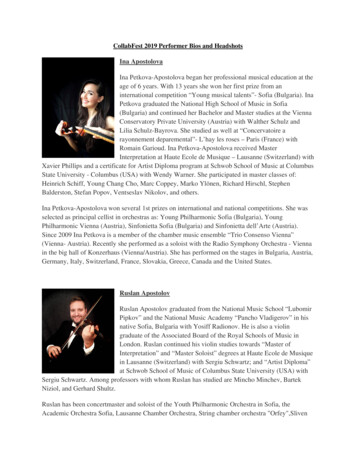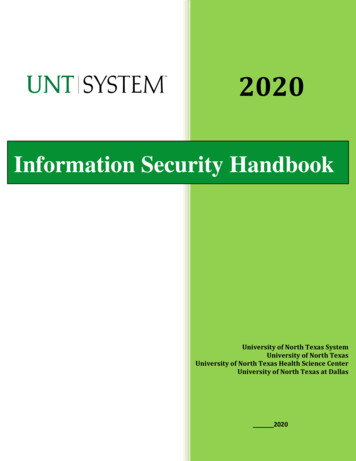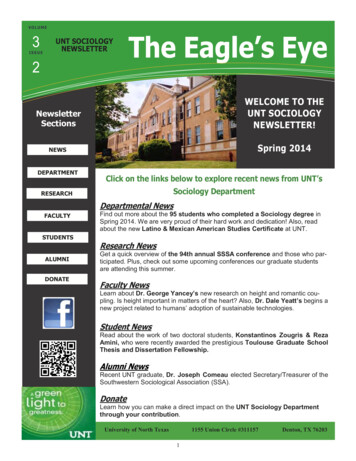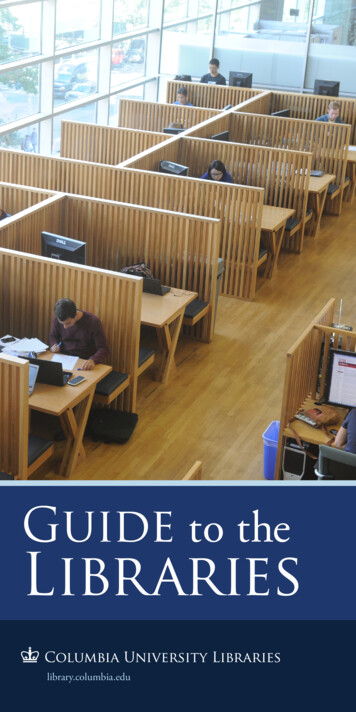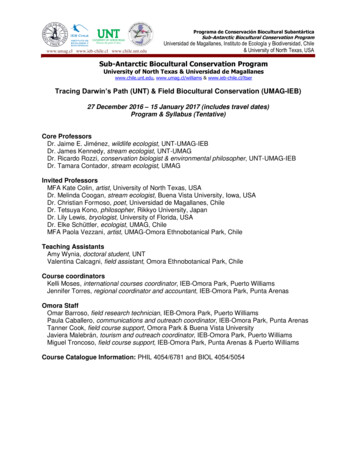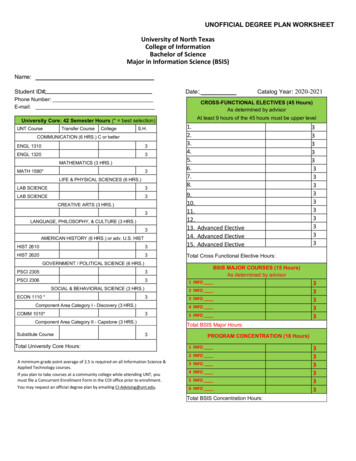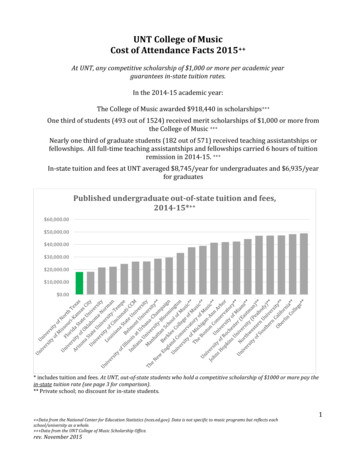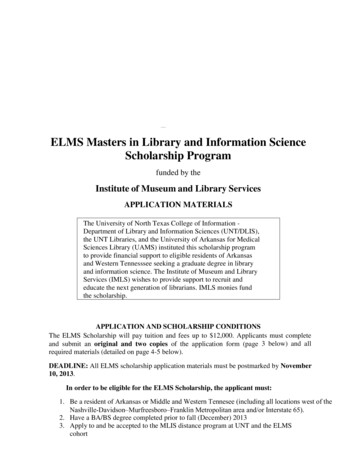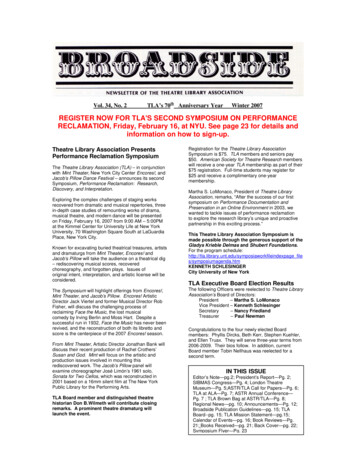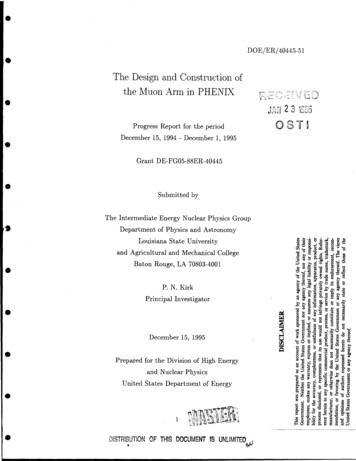
Transcription
Introdu ctionThe purpose of this report is to describe activities performed by the Intermediate EnergyNuclear Physics Group (lEN PG) at the Louisiana State University (LSU) under the terms ofgrant DE-FG05-88ER40445. The report will cover the period of tim e between approximatelyDecember 15, 1994, and the present.During the preceding year we have been actively involved with three collaborations - thePHENIX Collaboration, the DLS Collaboration, and the E866 Collaboration at Fermilab th a t are the foci of our activities. In addition we are members of a fourth collaboration, theAMY Collaboration at KEK, and in concert with other members of th at collaboration weare working diligently to term inate all its ongoing activities.P u b lica tio n sDuring the calendar year 1995 four papers th a t were supported in part by grant DE-FG0588ERO40445 appeared in print and a fifth was ofiicially accepted for publication. Theyare:1. A high-Q2 measurement of the photon structure function F , S. K. Sahu et al., Phys. Lett.B 346, (1995) 2082. A determ ination of a , in e e annihilation at355, (1995) 394 57.3 GeV, Y. K. Li et al., Phys. Lett. B3. A measurement of Bose-Einstein correlations in e e annihilation at TRISTAN, S. K. Choiet ah, Phys. Lett. B 355, (1995) 4064. Study of two particle azim uthal correlations in e e annihilation atet al., Phys. Rev. D,52, (1995) 4872 58 GeV, S. Kanda5. M easurement of charm production in two photon processes using lepton events at TRISTAN,T. Aso et al., Phys. Lett. B, (in press)P erson nelThree of the members of the lENPG , Zhi-fu Wang, Ying-chao Wang,, and P. N. Kirk, shouldrequire no introduction to the reader of this report, but in May, 1995, our numbers increasedthrough the addition of two undergraduates, M r. Jam es G re g u ric h and M r. M icahM cD aniel. These two young men have been extensively involved with the calculation ofthe resolution function for the DLS and have contributed in significant ways to the contentsof this report, and it is with pleasure th at we introduce them to the DOE at this time.
Opelousas Senior High School where he was the recipient of many honors. He was designateda “Louisiana Scholar” by the Louisiana State Board of Elementary and Secondary Education.He was also a member of the National Honor Society, and he was selected to receive the“Academic Fitness Award” by George H. W. Bush, a prominent politician at the time. Mr.Gregurich entered the Louisiana State University in Eunice, Louisiana, (LSUE) in 1988 underthe auspices of the early admissions program. He received an associates’ degree from LSUEin 1991 and entered the Louisiana State University in Baton Rouge immediately thereafteras a candidate for the B.S. degree in physics. Mr. Gregurich plans to begin graduate studiesin physics in January, 1997, and hopes to enroll at LSU.Mr. McDaniel is perhaps the most intellectually gifted student we have seen in years. Heand graduated from St. Amant High School in 1991.His academic potential being rather obvious, he was awarded both an Alumni AssociationScholarship and a Peagues engineering scholarship upon entry to LSU in August, 1991.During his sophomore year he was elected the outstanding sophomore in physics. Morerecently he was awarded the locally prestigious Pasqualli Porcelli scholarship in mathematics.He will graduate in May, 1996, having earned degrees simultaneously in physics, electricalengineering, and computer engineering. He hopes to enroll in graduate school at CornellUniversity in the fall of 1996.A c tiv itie s o f th e lE N P GThe PHENIX CollaborationDuring the past year we began simulating the interactions between An projectiles of fullenergy with residual gas in the beampipe at RHIC. We delivered a seminar on the subjectin July of this year at BNL and spoke once again on the simulation of beam-gas interactionsat a recent meeting of the muon subgroup in Kyoto, Japan. In this report we would like tosum m arize briefly the motivation for this simulation and its current status.The author has learned much from numerous conversations with Sebastian W h ite andK im o W elch at BNL, and it is a pleasure to acknowledge their tutelage concerning thevacuum and the configuration of the beamline. In addition Sue N o rto n at BNL spent manyhours locating the blueprints th a t were indispensable to the simulation of the beamline.Based upon conversations with W hite and Welch, we assumed the total pressure inside thewarm sections of the beampipe to be 5 x 10“ Torr and the composition of the residual gasto be 90% hydrogen, 5% carbon monoxide, and 5% CH 4 . Similarly, we assumed the totalpressure insid e the gas in the cold sections of the beampipe to be 1 x 10 “ Torr and thecomposition of the gas to be 95% hydrogen and 5% helium.Throughout the simulation we have assumed th at the heavy nuclei carbon and oxygen couldbe regarded as nitrogen. The prim ary justification for this assumption was pure expediency;we possessed a H IJET file for nitrogen but none for carbon or oxygen. In addition the
Gregurich entered the Louisiana State University in Eunice, Louisiana, (LSUE) in 1988 under the auspices of the early admissions program. He received an associates' degree from LSUE in 1991 and entered the Louisiana State University in Baton Rouge immediately thereafter as a candidate for the B.S. degree in physics. Mr.
